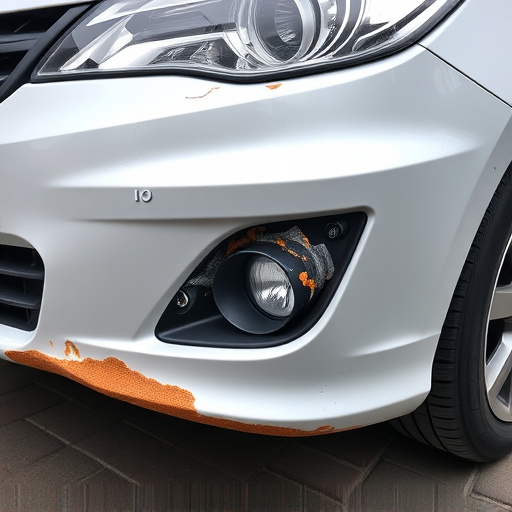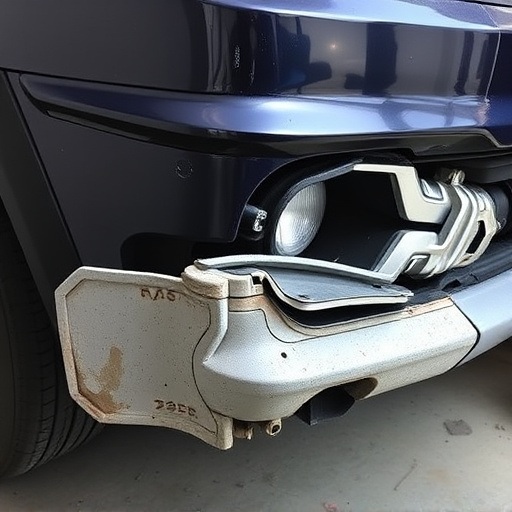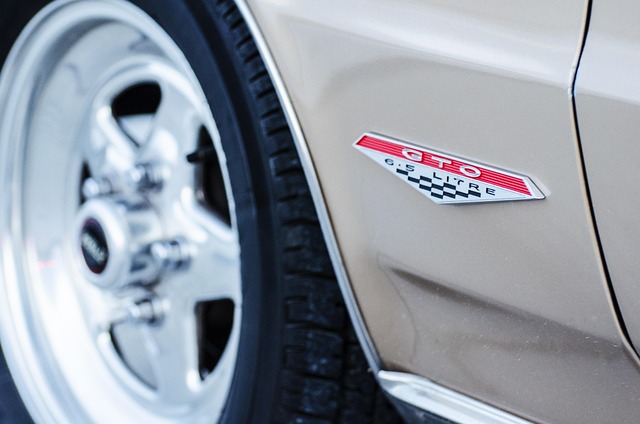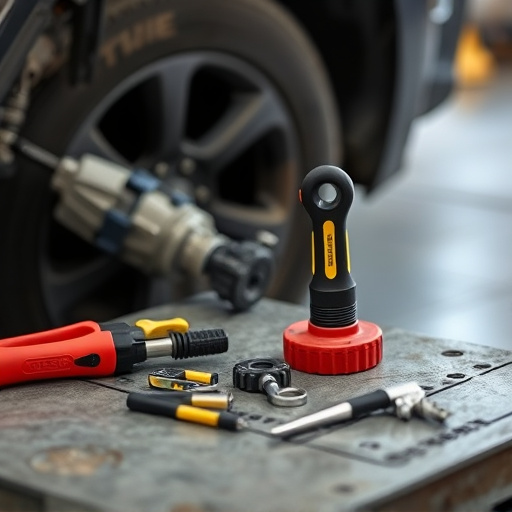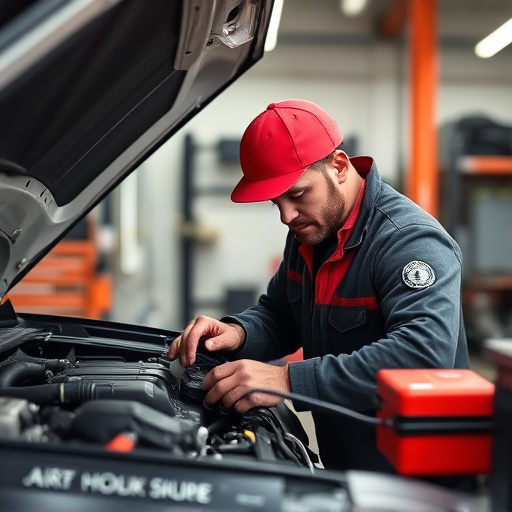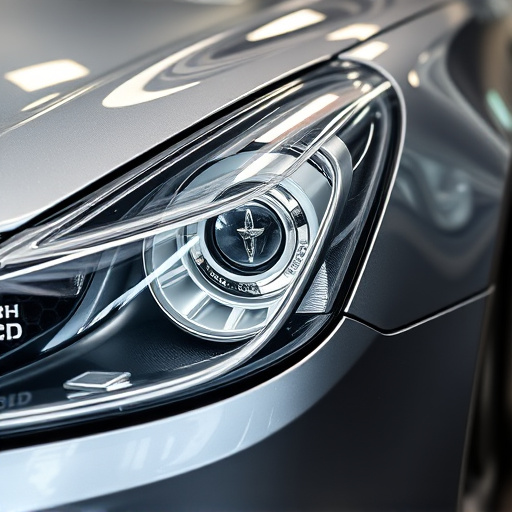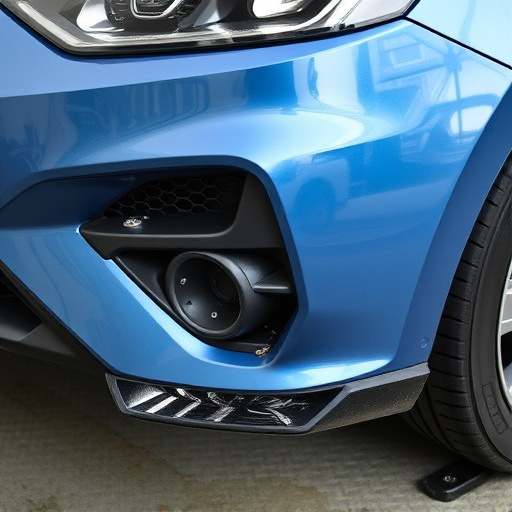Trouble codes in automotive diagnostics are crucial digital indicators for identifying and addressing vehicle issues, especially in complex electronic diagnostics collision cases. Advanced tools interpret these codes to pinpoint problem areas in modern vehicles with intricate electronic systems. Collision Damage Detection (CDD) uses sensor technology and data interpretation to reveal hidden structural changes, enhancing accuracy and efficiency in hail damage repairs. Integrating advanced electronic diagnostics is transforming collision repair processes, ensuring optimal restoration techniques for both minor issues and extensive collisions.
Unraveling the intricate link between trouble codes and collision damage detection is pivotal in the realm of modern vehicle technology. This article delves into the digital clues hidden within trouble codes, revealing their critical role in identifying post-collision vehicle damage. We explore the process of collision damage detection, highlighting advanced electronic diagnostics that enhance safety. By integrating these diagnostic tools, automakers strive to create smarter vehicles capable of swiftly assessing and reporting potential hazards, paving the way for safer roads.
- Understanding Trouble Codes: The Digital Clues
- Collision Damage Detection: Unveiling the Process
- Integrating Diagnostics for Safer Vehicles
Understanding Trouble Codes: The Digital Clues

In the realm of automotive diagnostics, trouble codes stand as digital clues that play a pivotal role in understanding and addressing vehicle issues, especially when it comes to electronic diagnostics collision cases. These error codes are generated by the car’s onboard computer as a response to sensor anomalies or malfunctions within its intricate systems. Each code is a specific language, providing insights into whether it’s an issue with the engine, transmission, or other critical components. For auto body services and automotive repair professionals, deciphering these trouble codes becomes essential in the process of collision damage detection and subsequent restoration, like classic car restoration projects.
By utilizing advanced diagnostic tools to read and interpret these codes, mechanics can identify problem areas, enabling them to deliver precise repairs. This is particularly crucial in modern vehicles where electronic systems have become increasingly complex. The ability to translate these digital clues ensures that auto body services and repair shops provide comprehensive solutions, be it for minor issues or extensive collision damage. Thus, understanding trouble codes is a skill that empowers automotive professionals to navigate through the intricate landscape of electronic diagnostics collision repairs, offering top-notch services in modern and classic vehicles alike.
Collision Damage Detection: Unveiling the Process
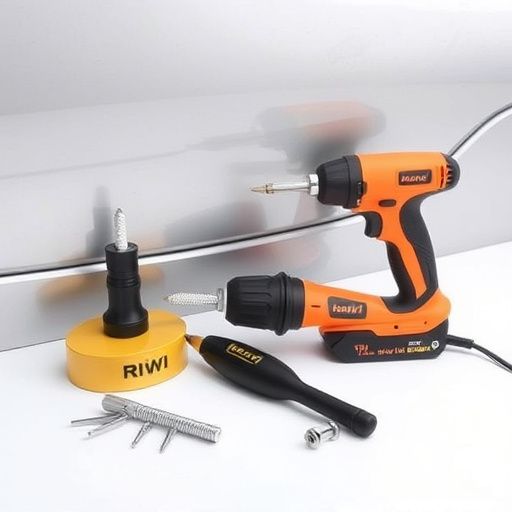
Collision Damage Detection (CDD) is a sophisticated process that revolutionizes the way auto body shops and vehicle repair centers assess and address damage, particularly in cases of hail damage repair. By employing electronic diagnostics collision analysis, CDD reveals hidden intricacies of potential vehicle repairs. This technology goes beyond visual inspection to uncover subtle changes in structural integrity, enabling more precise estimates for hail damage repair.
Through advanced sensor capabilities and data interpretation, CDD systems detect minute variations in a vehicle’s frame, panels, and components after a collision. These electronic diagnostics collision reports provide an invaluable tool for auto body shops, ensuring every aspect of the vehicle is considered during the repair process. This method not only facilitates more accurate and efficient hail damage repair but also contributes to the overall longevity and safety of vehicles brought in for vehicle repair.
Integrating Diagnostics for Safer Vehicles
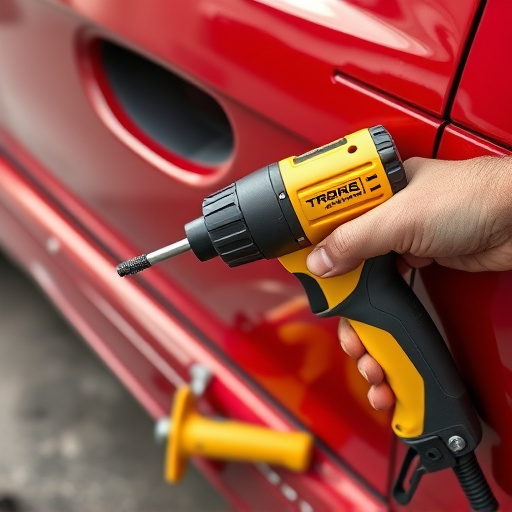
Integrating advanced electronic diagnostics into vehicles is revolutionizing the way we approach collision damage detection and overall vehicle safety. These cutting-edge systems play a pivotal role in enhancing the efficiency of repair processes, particularly in reputable vehicle body shops and auto collision centers. By seamlessly integrating diagnostic tools with collision assessment, technicians gain access to real-time data, enabling them to make informed decisions and accurately identify even subtle damages that might be invisible to the naked eye.
This technological advancement is crucial for ensuring precise hail damage repair or managing complex auto collision scenarios. The diagnostics provide a comprehensive view of the vehicle’s condition, allowing professionals at top-tier centers to optimize their techniques and restore vehicles to their pre-collision state with enhanced accuracy and speed.
The integration of trouble codes and collision damage detection through advanced electronic diagnostics is revolutionizing vehicle safety. By understanding the digital clues embedded in trouble codes, we can uncover potential collision issues and facilitate more accurate and prompt repairs. This synergistic approach not only enhances roadworthiness but also contributes to a safer driving experience, making it an indispensable tool for modern automotive maintenance and innovation.
